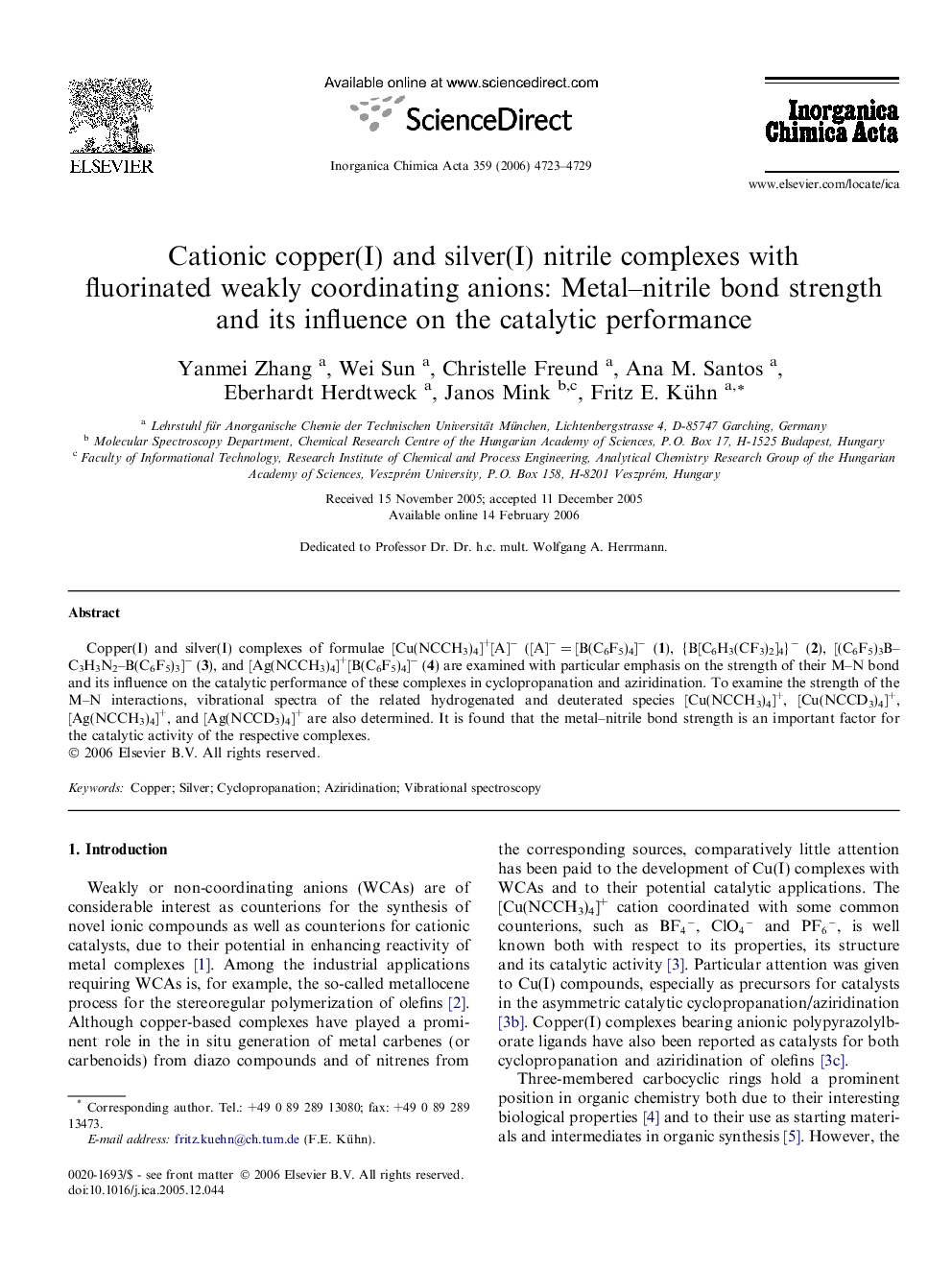| کد مقاله | کد نشریه | سال انتشار | مقاله انگلیسی | نسخه تمام متن |
|---|---|---|---|---|
| 1310943 | 975268 | 2006 | 7 صفحه PDF | دانلود رایگان |

Copper(I) and silver(I) complexes of formulae [Cu(NCCH3)4]+[A]− ([A]− = [B(C6F5)4]− (1), {B[C6H3(CF3)2]4}− (2), [(C6F5)3B–C3H3N2–B(C6F5)3]− (3), and [Ag(NCCH3)4]+[B(C6F5)4]− (4) are examined with particular emphasis on the strength of their M–N bond and its influence on the catalytic performance of these complexes in cyclopropanation and aziridination. To examine the strength of the M–N interactions, vibrational spectra of the related hydrogenated and deuterated species [Cu(NCCH3)4]+, [Cu(NCCD3)4]+, [Ag(NCCH3)4]+, and [Ag(NCCD3)4]+ are also determined. It is found that the metal–nitrile bond strength is an important factor for the catalytic activity of the respective complexes.
Copper(I) and silver(I) nitrile complexes with different weakly coordinating anions have been synthesized. The metal–nitrile bond strength, evaluated from vibrational spectra, was found to have a strong influence on the catalytic performance of the corresponding complexes in cyclopropanation and aziridination reactions.Figure optionsDownload as PowerPoint slide
Journal: Inorganica Chimica Acta - Volume 359, Issue 15, 1 December 2006, Pages 4723–4729